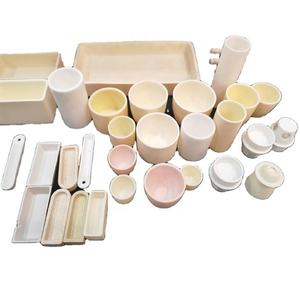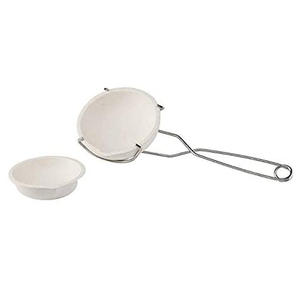From Ancient Craft to High-Tech Innovation: The Evolution and Industrial Transformation of Ceramic Products in the 21st Century silicium nitride
Introduction to Ceramic Products: Connecting Practice with Modern Material Science
Ceramic items have actually progressed much beyond their historic origins in ceramic and art, becoming important components in aerospace, electronics, medicine, and power systems. Specified by their inorganic, non-metallic composition and high-temperature processing, modern ceramics provide unmatched efficiency in severe atmospheres. Whether as insulators in integrated circuits, implants in human joints, or architectural products in jet engines, ceramic items today represent a fusion of old craftsmanship and innovative nanotechnology.
(Ceramic Products)
Category and Useful Properties of Ceramics
Ceramic products can be generally classified right into standard (e.g., blocks, floor tiles, porcelain) and advanced (e.g., silicon nitride, zirconia, alumina) kinds based upon structure and application. Standard ceramics are valued for their low cost, longevity, and aesthetic appeal, while advanced ceramics excel in mechanical stamina, thermal resistance, and electric behavior. Their special mix of hardness, rust resistance, and bio-inertness makes them important where metals and polymers fall short, especially under high tension, temperature, or chemical exposure.
Manufacturing Processes and Technological Advancements
The manufacturing of ceramic products entails powder synthesis, shaping, sintering, and ending up– each step crucial to accomplishing wanted buildings. Advancements such as stimulate plasma sintering, additive manufacturing, and colloidal processing have actually significantly improved dimensional precision, microstructural control, and useful combination. These improvements enable complicated geometries and multi-functional layouts that were formerly difficult with traditional methods like slip spreading or dry pushing. Such progression has actually broadened the extent of ceramic applications throughout markets.
Function in Electronics and Semiconductor Industries
In the electronics sector, ceramic items act as substratums, capacitors, sensing units, and insulating components due to their superb dielectric buildings and thermal security. Multilayer ceramic capacitors (MLCCs), for example, are found in nearly every electronic gadget, from smart devices to electric vehicles. Alumina and light weight aluminum nitride substrates are extensively made use of in power modules and LED warmth sinks, guaranteeing effective thermal management and long-term reliability in high-performance systems.
Medical Applications: Bioceramics and Implantable Instruments
Bioceramics stand for among the fastest-growing sectors in the ceramic item market. Materials like hydroxyapatite, alumina, and zirconia are used in oral implants, bone substitutes, and joint prostheses because of their biocompatibility and wear resistance. Unlike metal implants, ceramic-based devices decrease ion leaching and lessen allergies, making them suitable for lasting implantation. Current advancements in porous scaffolds and bioactive glass-ceramics additionally boost cells integration and regenerative abilities in clinical therapies.
Aerospace and Defense: Ceramics in Extreme Conditions
Ceramic items play a critical role in aerospace and protection systems where materials have to endure severe temperatures, stress, and influence. Elements such as wind turbine blades, rocket nose cones, and thermal protection ceramic tiles count on porcelains like silicon carbide and zirconium dioxide to preserve architectural integrity under hypersonic rates and re-entry problems. Their lightweight nature incorporated with high compressive toughness also makes them eye-catching for armor plating and ballistic protecting in army applications.
Environmental and Energy Technologies Using Ceramics
( Ceramic Products)
From fuel cells to nuclear waste encapsulation, ceramic products are main to lasting energy and ecological removal modern technologies. Strong oxide gas cells (SOFCs), as an example, rely on yttria-stabilized zirconia electrolytes to allow efficient power conversion at high temperatures. In nuclear design, porcelains like SYNROC (artificial rock) are created to immobilize radioactive isotopes in steady crystalline matrices. In addition, catalytic ceramic membrane layers are being released in water purification and industrial discharge control, adding to international sustainability initiatives.
Market Patterns and Global Demand Drivers
The worldwide ceramic items market is seeing durable development, fueled by demand from electronics, medical care, automobile, and renewable resource sectors. Asia-Pacific continues to be the biggest producer and consumer, driven by China’s manufacturing dominance and Japan’s leadership in innovative ceramics. The United States And Canada and Europe comply with carefully, sustained by R&D financial investments in wise ceramics and green technology initiatives. As automation and electronic design devices end up being extra integrated into ceramic production, production efficiency and personalization capacities continue to rise.
Obstacles and Future Directions in Ceramic Product Advancement
In spite of their benefits, ceramic products encounter difficulties consisting of brittleness, limited ductility, and high processing expenses. Continuous research concentrates on enhancing durability via nanostructuring, composite reinforcement, and self-healing systems. Reusing and end-of-life recovery additionally stay areas for enhancement, especially in high-value but difficult-to-reprocess elements. Looking onward, the convergence of AI-guided product layout, 3D printing, and wise noticing will certainly redefine exactly how ceramic items are crafted, generated, and applied throughout future industries.
Provider
Advanced Ceramics founded on October 17, 2012, is a high-tech enterprise committed to the research and development, production, processing, sales and technical services of ceramic relative materials and products. Our products includes but not limited to Boron Carbide Ceramic Products, Boron Nitride Ceramic Products, Silicon Carbide Ceramic Products, Silicon Nitride Ceramic Products, Zirconium Dioxide Ceramic Products, etc. If you are interested, please feel free to contact us.(nanotrun@yahoo.com)
Tags:
All articles and pictures are from the Internet. If there are any copyright issues, please contact us in time to delete.
Inquiry us

